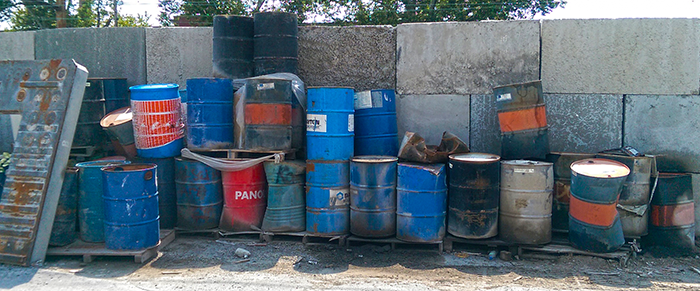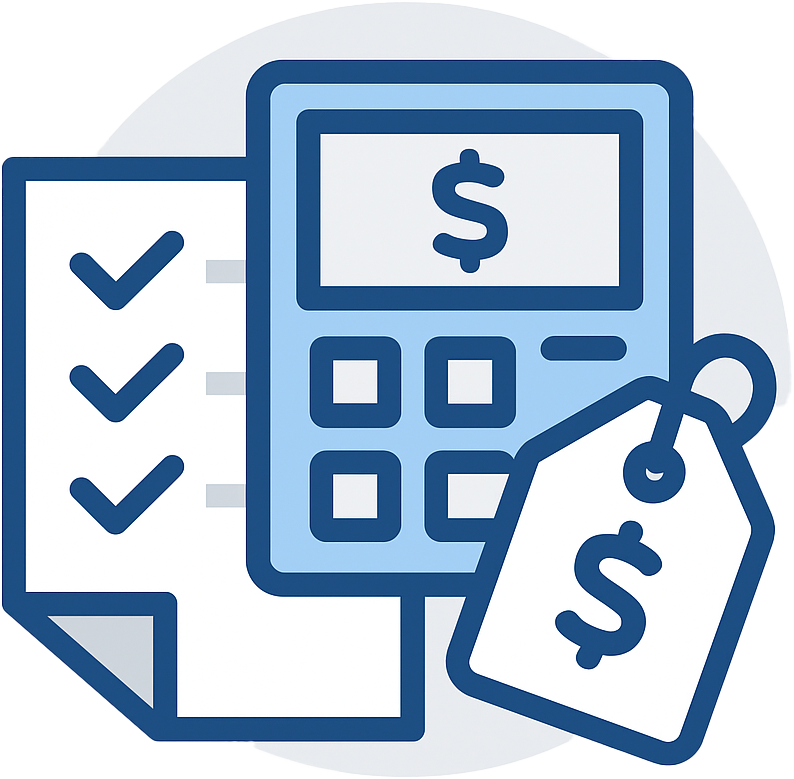We explain what a Phase I ESA is in a simple to understand manner.
If you're in the process of buying or refinancing a property, odds are you're hearing the term Phase I Environmental Site Assessment being thrown around. We find while many folks know they need one, or should get one, a lot of people aren’t sure what they are. In fact, a fairly common question once we start talking about Phase I's is pretty straightforward, which is what is a Phase I Environmental Site Assessment?
It's a great question, because many, many people out there at some point in their professional lives may need to get one, but we find that a lot of folks don't exactly know what they are, especially if you've never refinanced or purchased commercial or industrial property. Even worse, the regulations around a Phase I ESA can be confusing to someone who's not an environmental expert, making DIY research pretty tricky.
Fortunately, we've spent years both in the field and in the boardroom reviewing Phase I's with clients, and explaining to them what they are and what kind of protections they offer their business.

Why get a Phase I Environmental Site Assessment?
Let's start in a strange place and take a walk down history lane before we learn what one is.
We all know what a "Superfund" site is, right? Think of a place like Love Canal, for example. Someone made an environmental mess, and someone needs to be responsible for cleaning it up. It's sensible, right? I know I don't object to the idea.
Congress didn't object either, and in response to realizing that the United States was starting to have a problem with highly contaminated properties, they created the Comprehensive Environmental Response, Compensation, and Liability Act (CERCLA, commonly known as Superfund).
One prime component of this act, and I'm going to extremely over simplify it here, is that if you contaminate a site, you're on the hook for cleaning it up.

It's not always as simple as that though. Let's say you bought a site and later find out it's contaminated. First off, shame on you, because that means you didn't get a Phase I done. Second, you're probably wondering who's going to clean up this mess?! Guess what, it's your responsibility now.
That's right, if you didn't go through the very detailed, specific process of investigating the present and past uses of the property, and the potential presence of environmental contamination of the property, then YOU are responsible for the cleanup! That's the way the law is written, and you can't fight it.
Without giving away legal advice, or getting in too deep into regulations, if your Phase I was conducted in accordance with AAI standards (which I'll discuss below) then you might not be responsible for clean-up costs at your facility. Conducting a Phase I can provide you with certain protection in this situation. Meaning, you probably may not be liable for the cleanup. Learn more in our article what protection does a Phase I provide?
So how do you avoid this? By getting a Phase I.

But what is a Phase I Environmental Site Assessment?
It's an investigation of the subject property which must be conducted following ASTM standards which conform to the All Appropriate Inquiry standards, acceptable to the USEPA for provision of certain defenses against CERCLA liability. That's about as clear as mud, right?
In layman's terms, it's an investigation of your property by a trained professional who must meet certain professional qualifications, known as an "environmental professional". It covers an investigation of the current and past history and uses of the property in question. What was previously on the site? What could past usage have done? Did any usage contaminate the soil or groundwater underlying the site? How about the current operation? Are any petroleum, hazardous materials or chemicals in use at the site, or have they been released to the air, soil or groundwater at or near the site?
It's an investigation to determine if there are any conditions that are indicative of releases of petroleum or hazardous materials or chemicals at the site, now or in the past. These conditions are collectively known as "REC" or recognized environmental conditions. So really, a Phase I is meant to identify REC at the subject property, either at present or which may have been present in the past.

What's included in a Phase I ESA?
Some of the areas of investigation include:
- A thorough review of historical records of the property, including historical aerial photographs, fire insurance mapping (maps, usually older, of most of the US showing what properties contained in the past, such as buildings, fuel tanks, etc.), and historical topographic mapping.
- A thorough review of readily available government environmental records of the property, such as for spills, releases to the environment, fuel tank registrations, hazardous material manifests, environmental records, etc.
- Interviews with current and past property occupants as might be obtainable, as well as others who might be able to shed light onto past or present uses of the property.
- A thorough site inspection, including all building interiors as well as all exterior property and grounds. This site inspection would include a visual inspection of the presence of features such as fuel or chemical storage tanks, the presence of stained soils, site activities, etc.

What's not included in a Phase I ESA?
It's important to note that a Phase I is limited to a visual inspection along with a documentation review only. There is normally no sampling or testing during a Phase I. Should issues arise, you'd most likely need to get a Phase II done. To learn more about that, read our article on what is a Phase II Environmental Site Assessment?
Also, there are a number of activities which are not normally within the scope of a Phase I, which are considered to be "non-scope items" which could potentially be provided during the site investigation. These might include things like the presence of mold, asbestos, lead paint, wetlands, compliance audits, etc.
What's the outcome of a Phase I Environmental Site Assessment?
After all the digestion of the documentation and the site inspection has occurred, it is up to the environmental professional to make some conclusions about what has been found out, to identify any RECs found, and to make recommendations as to the need for any possible further investigations. If no RECs are found, or the environmental professional considers them to be insignificant, then that's normally the end of the process. If significant RECs are present, and the environmental professional recommends, then Phase II activities normally occur. Not sure what RECs are? Check out our article on what are RECs in a Phase I ESA?
And remember, a lot of "professionals" like to automatically get you on the hook for additional work, but it's not always necessary and we discuss that here in do I need a Phase II ESA? If you don't need one, don't get one!

What does a Phase I ESA look like?
Another interesting question we get!
We used to prepare reports in a binder, or notebook, or some sort of print document. However, in an effort to go green, and create a more user-friendly experience, we now create all our documents as a PDF, which is easy to navigate and use.
Plus, when you consider that more and more documents are going digital, we find that reviewing records (which need to be included in the report) can often turn up hundreds, if not thousands of pages. In fact, I started a Phase I the other day, and have over 1,600 pages of records to review. I'm definitely not printing that out!
Some additional Phase I ESA considerations.
So you've heard enough, right? Well here's another question you're probably wondering; how much does a Phase I Environmental Site Assessment cost? Additionally, something I harp about because I've seen hundreds of people get burned on this, why you should you avoid a cheap Phase I ESA. And trust me, it's not for the reason you're thinking.
The best reason for conducting a Phase I investigation is this: to protect you from making a bad investment or becoming liable for the actions of others. Do it right, and you'll get a good measure of protection. Fail to conduct the Phase I ESA correctly, or not at all, and you're playing with fire. To learn more, click here to contact us, or give us a call at 888-RMA-0230 to discuss your needs today.


















